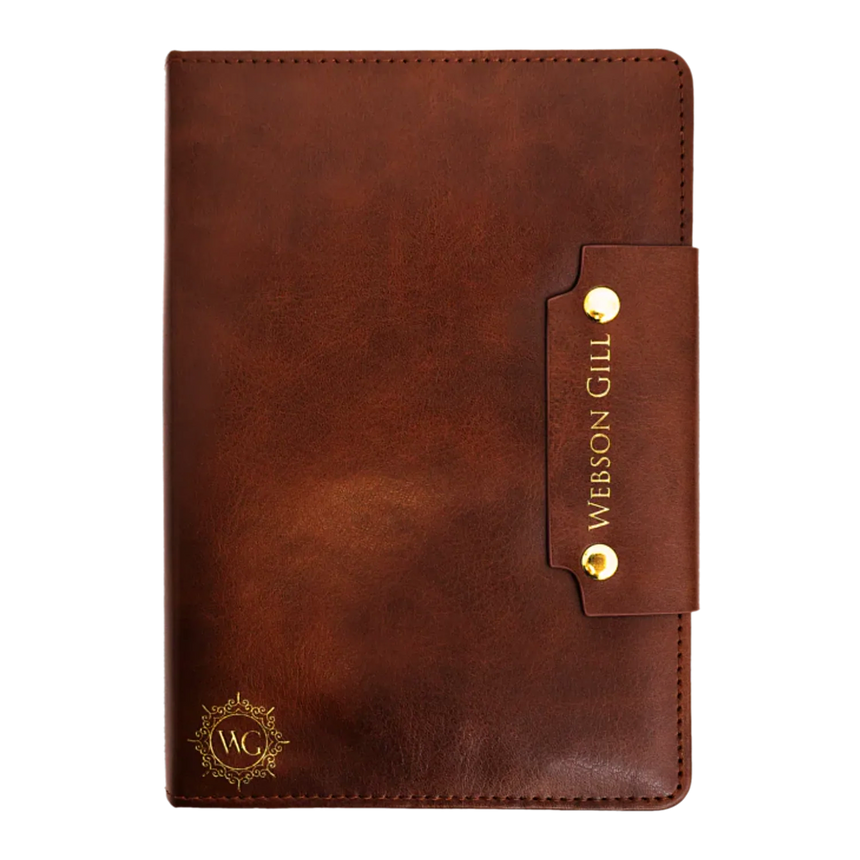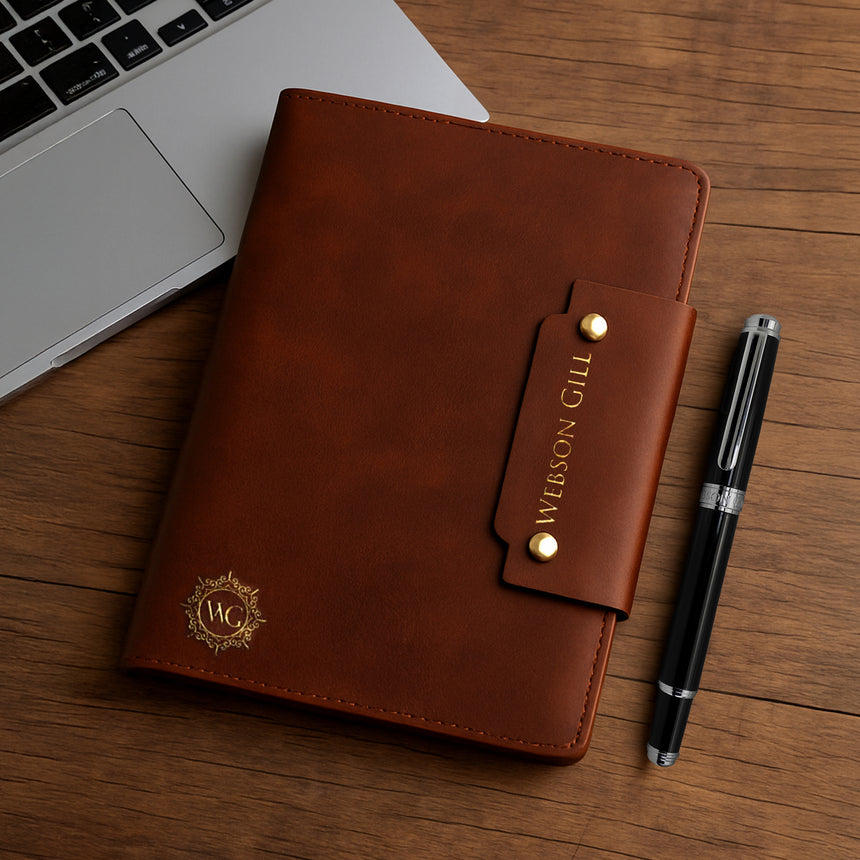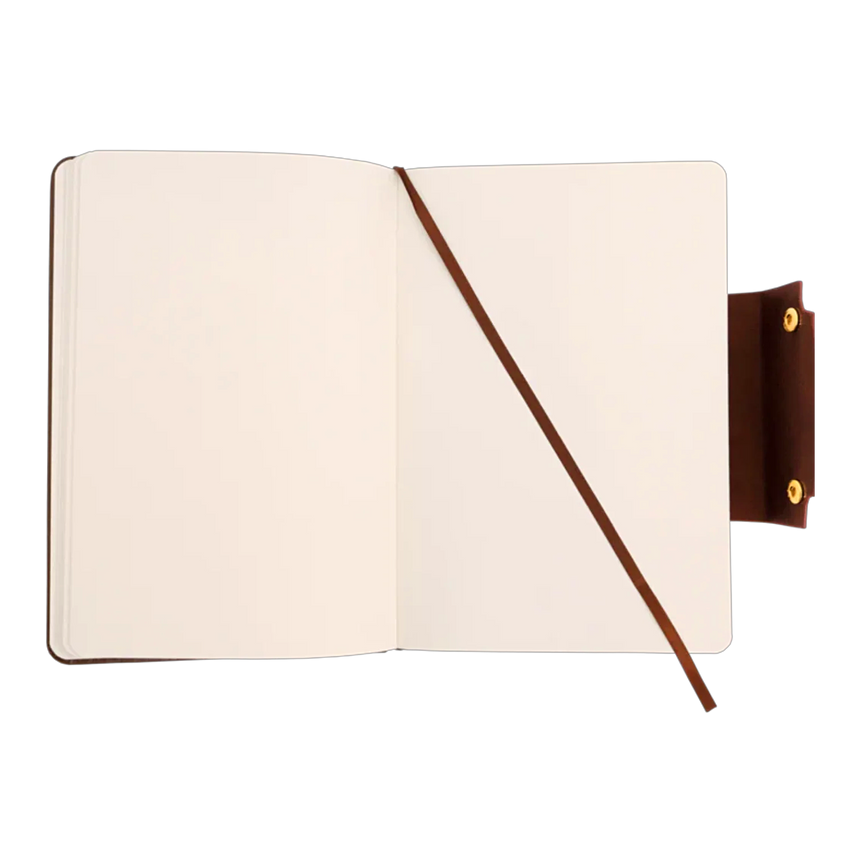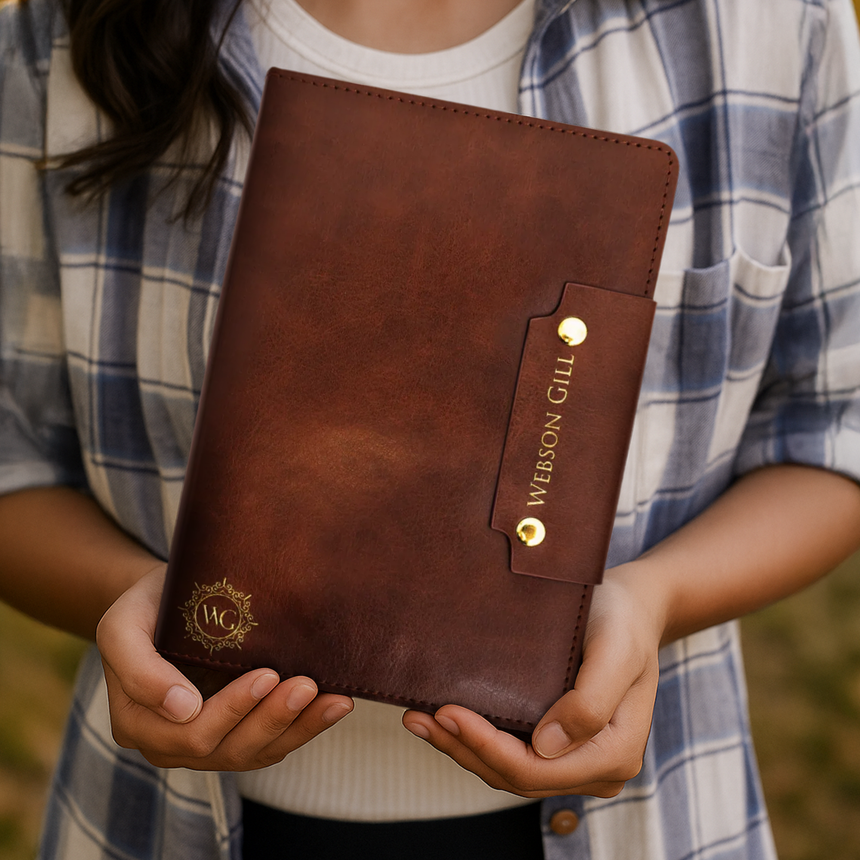Leather Writing Notebook
Leather Writing Notebook is backordered and will ship as soon as it is back in stock.
A good fountain pen deserves paper that can match its quality. As a fountain pen company, we understand how much the right paper quality matters for a smooth and consistent writing experience. That’s why we designed this leather writing notebook with 100 gsm off-white pages made specifically for fountain pens. The paper resists smudging and bleed-through, so your notes, letters, or journal entries stay clear and easy to read, even years later.
Material
Material
100 gsm Off-White Paper
The paper in this notebook is 100 gsm, thick enough to handle fountain pen ink without smudging or bleeding through to the other side. You can write with confidence knowing the ink will stay where it belongs. The off-white shade softens the page, making it easier on the eyes than stark white paper, and it gives inks a natural background that shows their color clearly. It’s a reliable surface for everyday notes, journal writing, or longer writing sessions.
Leather Cover and Ribbon Bookmark
This journaling notebook is bound in a leather exterior cover that not only looks elegant but also protects the pages inside. Leather develops character over time, picking up a natural patina that makes each notebook unique to its owner. It’s strong enough to withstand daily use, so the notebook keeps its shape even when carried around. Inside, a fabric ribbon bookmark makes it easy to keep track of where you left off, so you can quickly return to your notes or journal entries without flipping through pages.
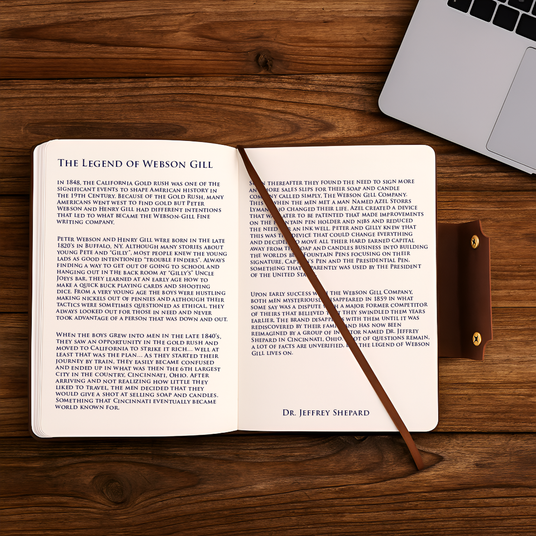
Fountain Pen Friendly Paper That Resists Bleed-Through
When it comes to fountain pen writing, the paper you use makes a big difference. Regular paper is often too thin, which can lead to ink bleeding, feathering, or showing through to the other side. For a smooth and consistent writing experience, the paper needs to have enough thickness and quality to handle fountain pen ink properly. That’s why this leather journal features 100 gsm off-white paper. At this weight, the pages are sturdy enough to prevent bleed-through while still keeping the notebook comfortable to carry. The surface allows ink to flow cleanly without spreading, so your writing stays crisp and legible.

The Importance of Using the Right Paper
Fountain pens work differently from writing tools like ballpoints or gel pens; the ink flows more freely, and how it behaves depends a lot on the surface it’s used on. The right paper prevents common issues like feathering, where the ink spreads into the fibers, or ghosting, where marks show through on the reverse side. Good fountain pen paper gives ink the chance to dry properly without soaking too deeply, so lines stay sharp and colors remain true. It also provides a smoother feel when writing, reducing drag and letting the pen glide more naturally. Using the correct paper is what ensures a consistent and enjoyable writing experience.
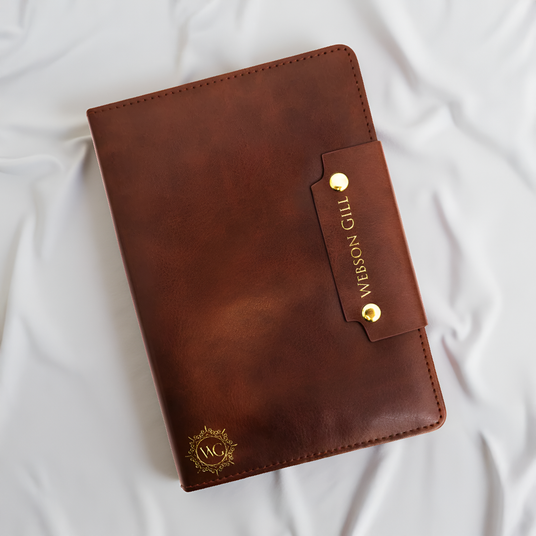
Durable Leather Cover for Long-Lasting Use
Leather has long been valued for its durability and its ability to improve with use. Unlike synthetic covers that can wear out or peel over time, leather remains strong and flexible while developing a natural patina that reflects how it’s been used. It also provides a sturdy surface that protects the pages inside, whether the journal is kept on a desk or carried in a bag. Beyond protection, the leather cover design has a timeless look and feel that makes a journal something you want to reach for and keep using.
Frequently Asked Questions
What is the best paper weight for fountain pens?
What is the best paper weight for fountain pens?
For fountain pens, paper should be thick enough to prevent ink from bleeding through or feathering. In most cases, 90–100 gsm or higher is considered ideal. This weight provides enough density to handle wet ink while still keeping the notebook comfortable to use. Thinner paper, like standard office paper (70–80 gsm), often struggles with fountain pen ink, leading to show-through and smudges. With 100 gsm paper, you get a good combination of durability, smoothness, and a clean writing surface that works well for everyday writing goals and journaling.
How do I care for a leather journal to make it last longer?
How do I care for a leather journal to make it last longer?
To extend the life of a leather journal, keep it away from excessive moisture and direct sunlight, as both can damage the material over time. Wipe the cover occasionally with a soft, dry cloth to remove dust and dirt. If the leather starts to feel dry, you can apply a small amount of leather conditioner to keep it supple, but avoid over-conditioning. Store the journal in a cool, dry place when not in use, and avoid stacking heavy items on top of it to maintain its shape. With basic care, leather develops a natural finish and becomes even more durable and unique with age.
How do I choose a fountain pen friendly notebook?
How do I choose a fountain pen friendly notebook?
A fountain pen friendly notebook should have paper that can handle wet ink without feathering, smudging, or bleeding through. Look for paper that is 90–100 gsm or higher, as this weight offers enough thickness for clean writing. Off-white or cream pages are often preferred since they reduce glare and make inks appear more natural. The surface should feel smooth but not overly glossy, so the ink dries at a reasonable pace. Other useful features include durable binding, a sturdy cover that protects the pages, and extras like a ribbon bookmark to mark your place.
Does paper texture affect fountain pen writing?
Does paper texture affect fountain pen writing?
Yes, paper quality and texture have a big impact on how a fountain pen feels and performs. Smooth paper allows the nib to glide easily, creating clean lines and a more consistent flow of ink. Textured or rough paper can slow the pen down, create feedback, and sometimes cause the nib to catch. On very absorbent paper, ink may spread too quickly, leading to feathering or blurred lines.

